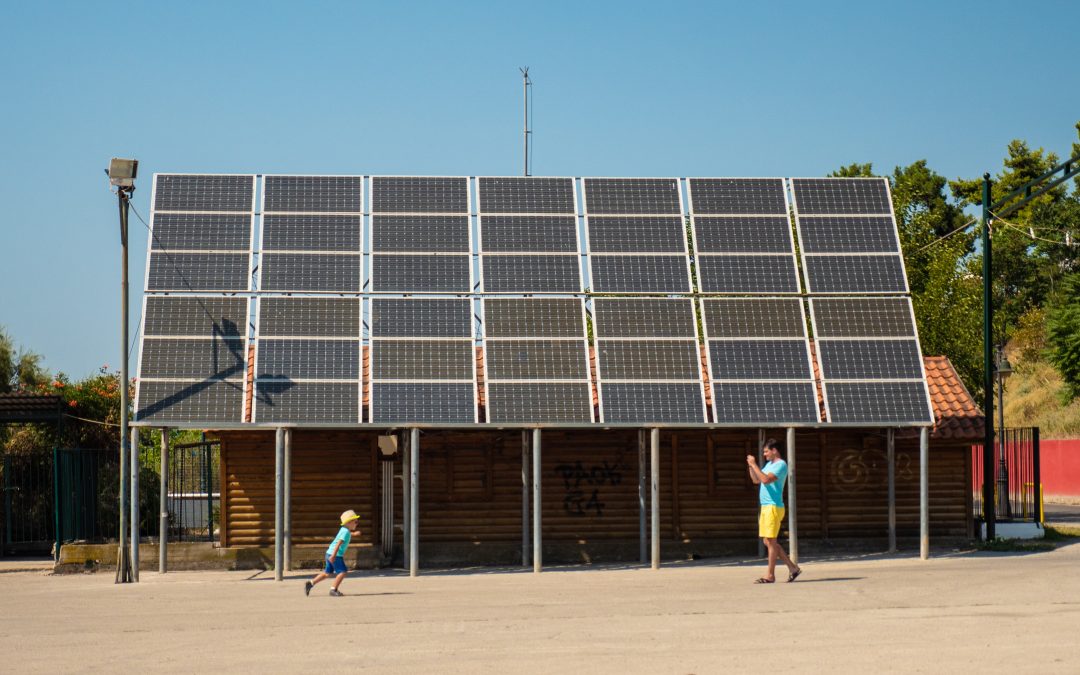As the world continues to grapple with the pressing need for sustainable energy solutions, the construction and architecture industries are stepping up to the challenge with innovative technologies. One such cutting-edge development is Building-Integrated Photovoltaics (BIPV). This groundbreaking technology integrates solar panels directly into building materials, such as windows, roofs, and facades, offering a seamless blend of aesthetics and functionality. BIPV is set to revolutionize the way we think about building design and energy efficiency.
What is Building-Integrated Photovoltaics (BIPV)?
Building-Integrated Photovoltaics refers to the integration of photovoltaic materials into the building envelope, replacing conventional building materials. Unlike traditional solar panels that are mounted on rooftops, BIPV systems are designed to be part of the building structure itself. This can include photovoltaic glass windows, solar shingles, and facade-integrated solar panels.
The Benefits of BIPV
- Aesthetic Appeal: One of the main advantages of BIPV is its ability to blend seamlessly with the architectural design of a building. Solar panels no longer need to be unsightly additions but can be integral parts of the design, enhancing the visual appeal.
- Energy Efficiency: BIPV systems generate electricity on-site, reducing reliance on external power sources and lowering energy costs. This contributes significantly to a building’s overall energy efficiency.
- Sustainability: By harnessing renewable solar energy, BIPV helps reduce carbon emissions and the building’s environmental footprint. It supports green building certifications like LEED and BREEAM.
- Cost-Effective: While the initial investment in BIPV may be higher than traditional materials, it can lead to long-term savings. These savings come from reduced energy bills, potential tax incentives, and lower maintenance costs due to the dual functionality of the materials.
- Durability and Protection: BIPV materials are designed to be durable and weather-resistant, providing the same level of protection as traditional building materials while generating electricity.
Applications of BIPV
- Solar Roofs: Solar shingles and tiles can be used in place of traditional roofing materials. These solar roofs not only protect the building but also generate significant amounts of electricity.
- Photovoltaic Facades: BIPV facades integrate solar panels into the outer walls of buildings. These can be used on both new constructions and retrofits, turning vertical surfaces into energy-producing assets.
- Solar Windows: Transparent or semi-transparent photovoltaic glass can replace traditional windows, allowing natural light to enter while generating electricity. These solar windows can be used in office buildings, residential homes, and commercial spaces.
The Future of BIPV
The trend toward sustainable and energy-efficient building design is driving the growth of the BIPV market. Architects and builders are increasingly adopting BIPV technology to meet the demand for greener buildings. Advances in photovoltaic technology are continually improving the efficiency and aesthetics of BIPV systems, making them more attractive to developers and property owners.
Several high-profile projects around the world have already successfully implemented BIPV, setting new standards for sustainability in architecture. For example, the Copenhagen International School in Denmark features a facade of 12,000 solar panels, generating half of the school’s electricity needs. Similarly, the Solar City Tower in Rio de Janeiro incorporates BIPV to produce clean energy for the city’s power grid.
Building-Integrated Photovoltaics represent a significant leap forward in the quest for sustainable building practices. By integrating solar power generation directly into the structure of buildings, BIPV offers an elegant and efficient solution to the world’s energy challenges. As technology advances and adoption increases, BIPV will play a crucial role in creating the energy-efficient, sustainable buildings of the future.
For companies involved in the solar industry, embracing BIPV technology not only opens up new market opportunities but also positions them as leaders in sustainable innovation. By offering BIPV solutions, solar companies can cater to the growing demand for green building technologies and contribute to a more sustainable world.
Stay ahead of the curve by exploring the potential of BIPV and integrating this transformative technology into your projects. The future of building design is bright, and it’s powered by the sun.


Recent Comments